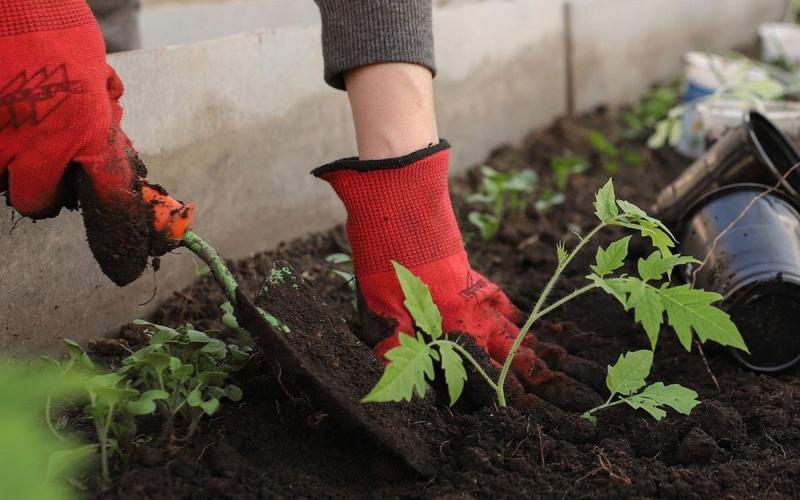Apple Maggot Injury
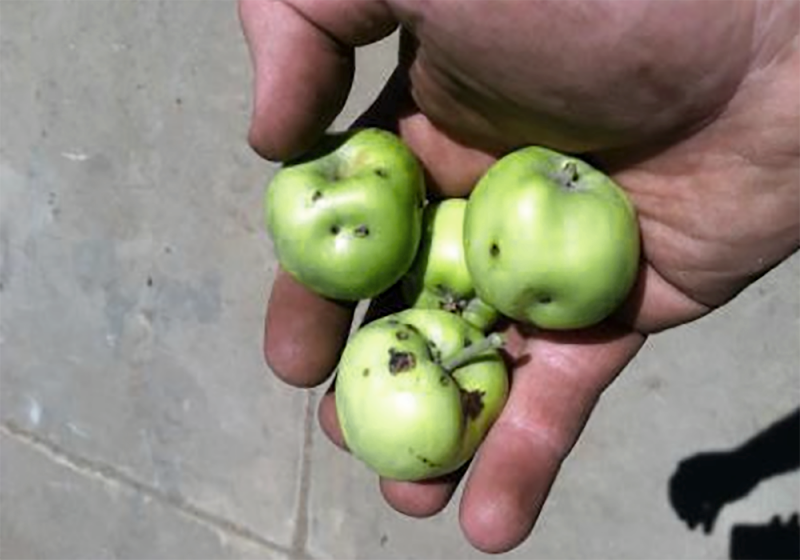
Apple maggot injury is beginning to show up across the state. The apple maggot is the most common insect pest of apples in South Dakota. The exterior of the infested fruit has a dimpled, lumpy appearance (Figure 1). The flesh has brown trails and often has a mushy texture. The larvae can be found in the fruit in late July into August. They are creamy white and legless and leave brown trails through the flesh. Once the larvae are in the fruit there is nothing that can be done. The maggot lives in the fallen fruit for a couple of days before crawling out and burrowing into the soil to pupa. Promptly picking up and disposing of any fallen fruit will help to reduce next year’s infestation. The other treatment is to spray the developing fruit to kill the adults before they lay eggs but these treatments should have been started at the beginning of July.
Apple Scab
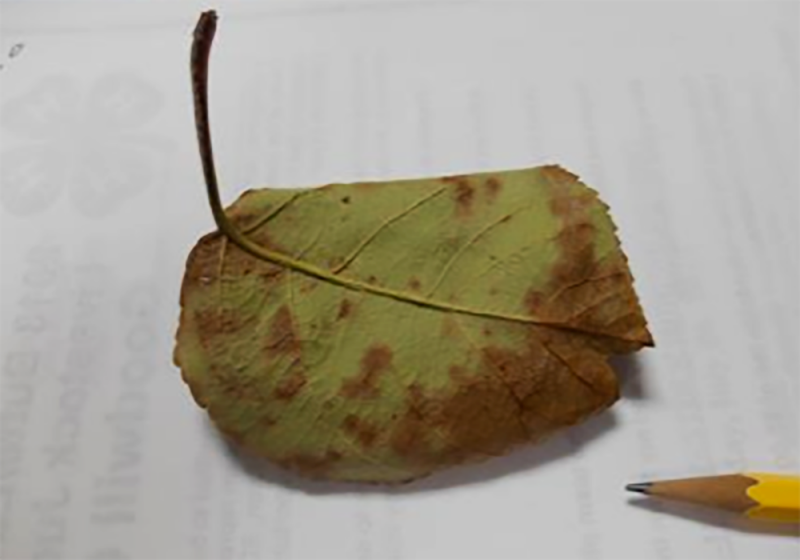
Apple scab is the most common disease of apples and crabapples in South Dakota. The disease occurs on leaves, blossoms and fruit. Infected leaves often are distorted and contain lesions. The lesions begin as velvety brown to olive spots that turn black (Figure 2). Infected leaves may begin dropping by midseason and in severe infections the entire tree may be defoliated by mid-August. Fruit infection is similar to the leaf with the fruit developing lesions that become brown and corky. Fruit cracking may also occur as a result of the infection. The disease overwinters primarily in the fallen leaves with the spores released during cool, rainy days in May and early June. Removing infected, fallen leaves in autumn provides limited control the next year as the spores can travel from other trees within 500 to 1000 feet and even missing a few infected leaves can result in new infections.
Cedar Apple Rust
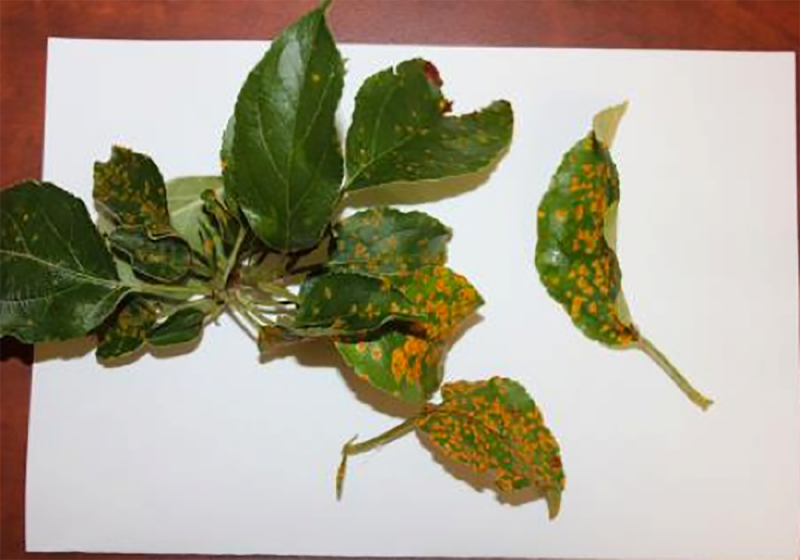
Cedar apple rust is appearing on apple trees. The disease infects the leaves and the fruit. Infected leaves develop pale, yellow spots on the upper leaf surface. These spots enlarge and turn orange (Figure 3). The infected leaves often drop prematurely, though rarely does the disease result in as severe of defoliation as apple scab. Infected fruit may develop similar spots, typically near the base of the fruit though fruit symptoms are rarely seen in South Dakota.
The disease, as with many rust diseases, must alternate between two different hosts to survive. Cedar-apple rust alternates between apples (and crabapples) and several species of junipers (though not the true cedars such as American arborvitae Thuja occidentalis).
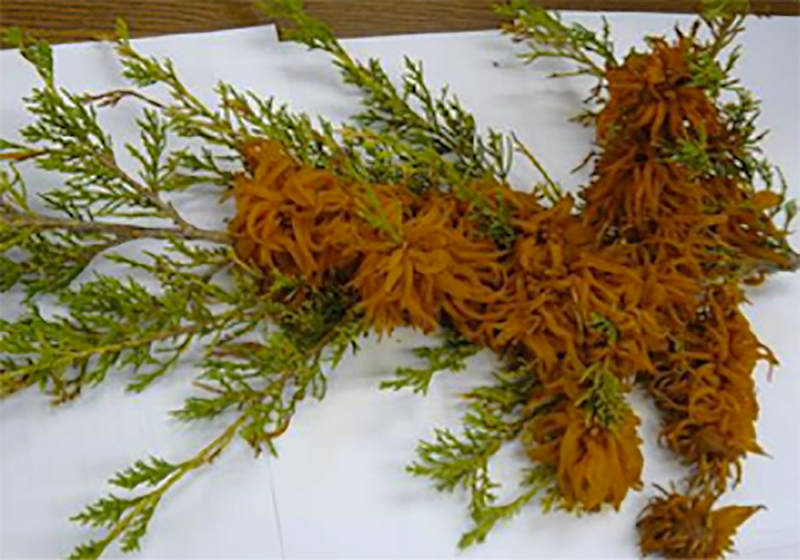
The fungus appears as a gelatinous orange-red mass with horns on junipers. This occurred about a month ago and Figure 4 shows the fruiting bodies on juniper. One means of breaking the cycle is to remove any eastern redcedar (Juniperus virginiana) or Rocky mountain junipers (Juniperus scopulorum) within 2 miles. This is probably not practical in most instances. Fungicide sprays are generally the best options. The leaves are vulnerable to infection about 4 days after they begin to expand while the fruit can become infected from the pink stage of the flower dubs till they fully open. There are limited numbers of effective fungicides available for the home orchard to manage this disease and they seem to come and go every year so I will wait till next spring to discuss fungicide options.
Fruit Cracking
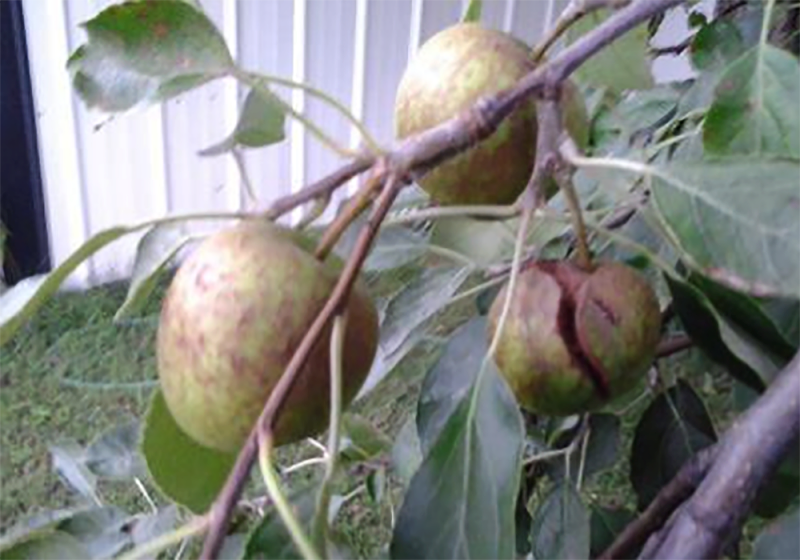
Fruit cracking is a problem we often see at this time of year on tomatoes but not usually apples. However when we have a summer with high humidity following cloudy, rainy weather (and we have had rain this year), we can experience splitting on apples. The cracks can be very short and narrow to expending almost from the base to the top and more than a ½ inch deep or more (Figure 5). Usually russets are common on cracked fruit as well. There is nothing that can be done to prevent this problem but it seems to be less of an issue on trees that are healthy so managing soil fertility and mulching to reduce competition should be part of orchard management.
